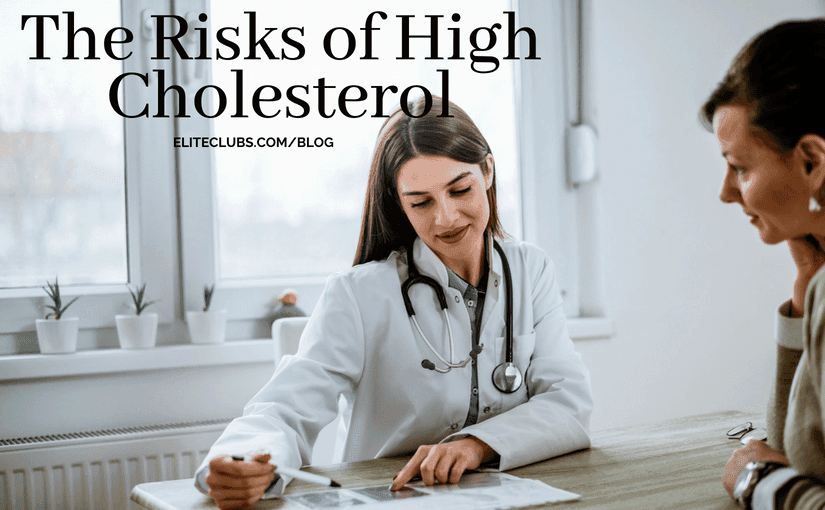
There are many risks associated with having high cholesterol. Understanding what causes, risk factors, and prevention methods will help you implement changes to your lifestyle in order to lower your cholesterol.
Cholesterol Overview
Cholesterol is a substance found in the fats within your blood. Your body needs cholesterol to build healthy cells. However, when cholesterol levels get too high, your risk of heart disease increases. High cholesterol may lead to a build-up of fatty deposits in your blood vessels. When these deposits grow larger, it makes it more difficult for blood to flow through your vessels. This means that your heart may have to work harder to combat the decreased blood flow, leading to an increased risk of heart attack and stroke.
Symptoms
Unfortunately, there are no symptoms of high cholesterol. The only way to identify high cholesterol is through a blood test.
Causes
You may have heard of two different types of cholesterol, low-density lipoprotein (LDL) and high-density lipoprotein (HDL). LDL cholesterol, or “bad” cholesterol, builds up in the walls of your blood vessels causing them to become narrow and hard. HDL cholesterol, or “good” cholesterol, transports excess LDL cholesterol out of the blood vessels and carries it to the liver.
Environmental factors such as physical inactivity, obesity, and an unhealthy diet can contribute to high LDL and low HDL cholesterol. DNA and your genetics may also play a role in your cholesterol levels.
Risk Factors
Several factors contribute to an increased risk of high cholesterol:
- Poor diet
- Diets heavy in saturated fat and trans fat can raise cholesterol levels. These foods include red meat, full-fat dairy, animal products, and commercially baked cookies and crackers.
- Obesity
- You are at risk of high cholesterol if your body mass index (BMI) is 30 or greater.
- Large waist circumference
- If you are a man, your risk increases with a waist circumference of 40 inches or greater.
- If you are a woman, your risk increases with a waist circumference of 35 or greater.
- Physical inactivity
- Exercise helps boost HDL cholesterol and minimizes the harmful effects of LDL cholesterol.
- Smoking
- Cigarettes cause damage to the walls of blood vessels. This makes them more likely to accumulate fatty deposits. Smoking also lowers your HDL cholesterol levels.
- Diabetes
- High blood sugar levels increase LDL cholesterol and decrease HDL cholesterol levels as well as cause damage to the lining of blood vessels.
Complications
Higher levels of cholesterol can lead to a condition called atherosclerosis. Atherosclerosis is an accumulation of cholesterol and other deposits within the blood vessels. These large deposits can reduce blood flow leading to symptoms such as:
- Chest pain
- When the blood vessels that deliver blood to the heart are affected by fatty deposits, you may experience chest pain.
- Heart attack
- If the fatty deposits tear or rupture, they can block the flow of blood. When blood flow to part of the heart stops, you can experience a heart attack.
- Stroke
- If blood flow to part of the brain is cut off, a stroke can occur.
Prevention
To help prevent high cholesterol, you should:
- Consume a diet lower in salt and higher in fruits, veggies, and whole grains
- Limit the amount of saturated fat in your diet and choose good fats in moderation
- Obtain and maintain a healthy weight through physical activity of at least 30 minutes per day, most days of the week
- Quit smoking
- Drink alcohol in moderation, if at all
If you would like additional tips or a program to lower your high cholesterol, come see me for a free fitness consultation!
Schedule a Nutrition ConsultationWritten by Sarah Brunner, RDN, CD; Elite Sports Clubs Registered Dietitian
Sarah is certified in food allergies/intolerances and nutritional counseling, Academy of Nutrition and Dietetics; has a certificate in Dietetics from Mount Mary University; and a BA in Education and Mathematics from the University of Wisconsin – La Crosse.
